The last two years of the pandemic have had many impacts on society as a whole, but especially on individuals. Given how COVID has disrupted so many areas of their lives, how are we seeing this show up at an organizational level?
In their presentation on the three types of organizational projects in 2020, Gartner explains that post-pandemic, there has been a shift in the kinds of projects taken on. We’re seeing more transformational projects than growth and improvement projects due to changing organizational needs. First, COVID restrictions created new needs:
- Physical (e.g. with remote work)
- Organizational (organizations had to review work processes and procedures to reflect new realities)
- And human (as employee-manager and coworker relationships changed, people had to find other points of reference).
These new realities forced companies to reevaluate their priorities and change their needs in the process.
Transformational debt and change saturation
can partially explain the shift in organizational focus. It “represents the required efforts for an organization to reduce or eliminate the gap between its current state and the organizational state necessary for it to fully leverage opportunities made available to it by new technology, and to ensure its survival in the future ecosystem. “Even though transformational debt existed before COVID, the pandemic has only exacerbated it. Many organizations and industries have had to adjust. Some have had to make bigger adjustments than others because they had more transformational debt.
Transformational debt includes human debt, which was also affected by the pandemic and has had a significant impact on individuals. The impacts have been felt in all four areas of their lives: professional, family, social and personal. Everyone has had to adapt to these successive changes in a short period of time. These overlapping changes have required us to constantly adapt. This has been even more demanding as we struggle to adapt to a new normal. As these various changes pile on top of one another, individuals become saturated to the point that it affects their ability to function or accept new changes.
“Change saturation is a state of mental overload marked by increased exhaustion and anxiety caused by one or more significant stressors in the individual’s environment that affects their overall ability to adapt and function,” says Emmanuelle Fortier PhD.PSYC, director at Talsom. To illustrate this concept, picture a glass of water. Before COVID, it was 50% or 75% full. But now it’s always one drop away from overflowing. We all have a limit to what we can handle. For many, COVID consumed all the energy they had, to the point they’re now saturated. As a result, your employees have less capacity. How do they recharge their batteries?
A combination of various solutions can offer relief. Some examples:
- Flexibility: Offering more flexibility in terms of human resources management provides relief to employees, e.g. scheduling. Because everyone’s home life is different and the times when they work most effectively vary, having a culture of flexibility helps remove stressors.
- Known and accessible health resources: This pandemic has had a huge impact on mental health, and psychological distress has increased significantly. Sharing support resources with your employees relieves them of the burden of finding them on their own. It also shows you care about their well-being.
Risks of change saturation
There are many potential risks of change saturation, including financial losses due to project failures and individual or overall loss of productivity. Risks also include burnout and missed work days related to a lack of motivation, tensions and conflicts between staff, loss of control and serious questioning (e.g., resignation).
Evaluate levels of change saturation to better support your employees
Change saturation isn’t just the result of changes at work; it’s an accumulation of change in all areas of employees’ lives. That means employers must find a way to evaluate employees’ overall individual capacity to adapt by taking into account what’s going on at home, at work, in society, and so on. That doesn’t mean employers should intervene here, though, since these areas are beyond their control.
For example, you can have employees complete an anonymous survey in which they evaluate their individual capacity to adapt and then the median capacity within the organization. The questionnaire quickly provides individual information and the median gives an overall picture. Employers can then adjust their approaches and projects based on the results. These surveys can be repeated with different subgroups (teams, roles, etc.).so on. They’re most effective when done consistently (weekly or bi-monthly). This gives you a regular update on how your teams are doing and shows changes over time. It also allows you to evaluate different areas through the various surveys.
By combining the individual capacity results with a change mapping exercise, you’ll also be able to identify gaps between the scope and quantity of projects that impact your employees and their capacity at the time of the survey. You can do this by conducting a project analysis to assess these two factors. You will get four quadrants: a comfort zone versus a saturation zone and two zones to monitor.
The comfort zone is where you’re able to minimize the individual saturation level. At the opposite end is the higher-risk change saturation zone. A small transformational debt can be a capacity booster that leads to the comfort zone. A large transformational debt exerts additional pressure and leads to the saturation zone. This exercise allows you to measure the risks associated with change saturation.
Be proactive instead of reactive.
Once you have the saturation indicator, how do you integrate it? The indicator can be applied and incorporated into all of your actions at every stage of the project. You need to strike a balance between what you can give and what you’re asking of employees. This balance best represents the tactics and strategies you’ll implement and things to keep in mind. When you assign someone a task, for example, you can expect that you’ll have to remove another one, either by hiring temporary help, or by prioritizing or redistributing tasks. However, redistributing tasks has consequences. In some cases it just moves the pain around.
Change saturation: the blind spot in your transformation projects
The pandemic threw the whole world, including the business sector, into crisis management mode. If 2020 was a time of reaction, 2021 was a bit more manageable. Now, in 2022, organizations are ready for the reset. However, there’s a generalized level of saturation, which jeopardizes various initiatives, including transformational projects that have become essential. Yet when we consider that, pre-pandemic, only 16% of companies said they were ready for their digital transformation, we can see just how important it is to mitigate risks.
Also, according to our survey on the state of digital transformation in companies, there’s a gap between how an individual perceives their level of motivation and their ability to actually adopt digital technologies compared to others. 48% of those surveyed say they’re highly motivated to adopt digital technologies. Managers (59%) and employees (55%) rate their ability to use technology in their work as high. Most also believe they have adequate resources to use technology. On the other hand, they evaluate the degree of digital adoption within their organization as average (58%) or low (9%) and consider it a barrier to business growth (64%).
Preventing the risks associated with change saturation can reduce both human and financial costs and risks. And that means those on the front lines (managers) must be equipped to detect the signs, understand their employees and take action to help them with support from the organization.
Whether economic, financial or pandemic-related, we’re seeing a pileup of crises impacting organizations, which heightens the need for anticipation and agility. People are at the heart of any change and must be a central focus of company priorities in order to support the changes. You can help them be more resilient by anticipating pressures your organization could face and planning solutions to respond to them.
Download our 7th edition of Radar, which analyzes the forces and pressures of future markets and presents technologies that organizations can leverage.


